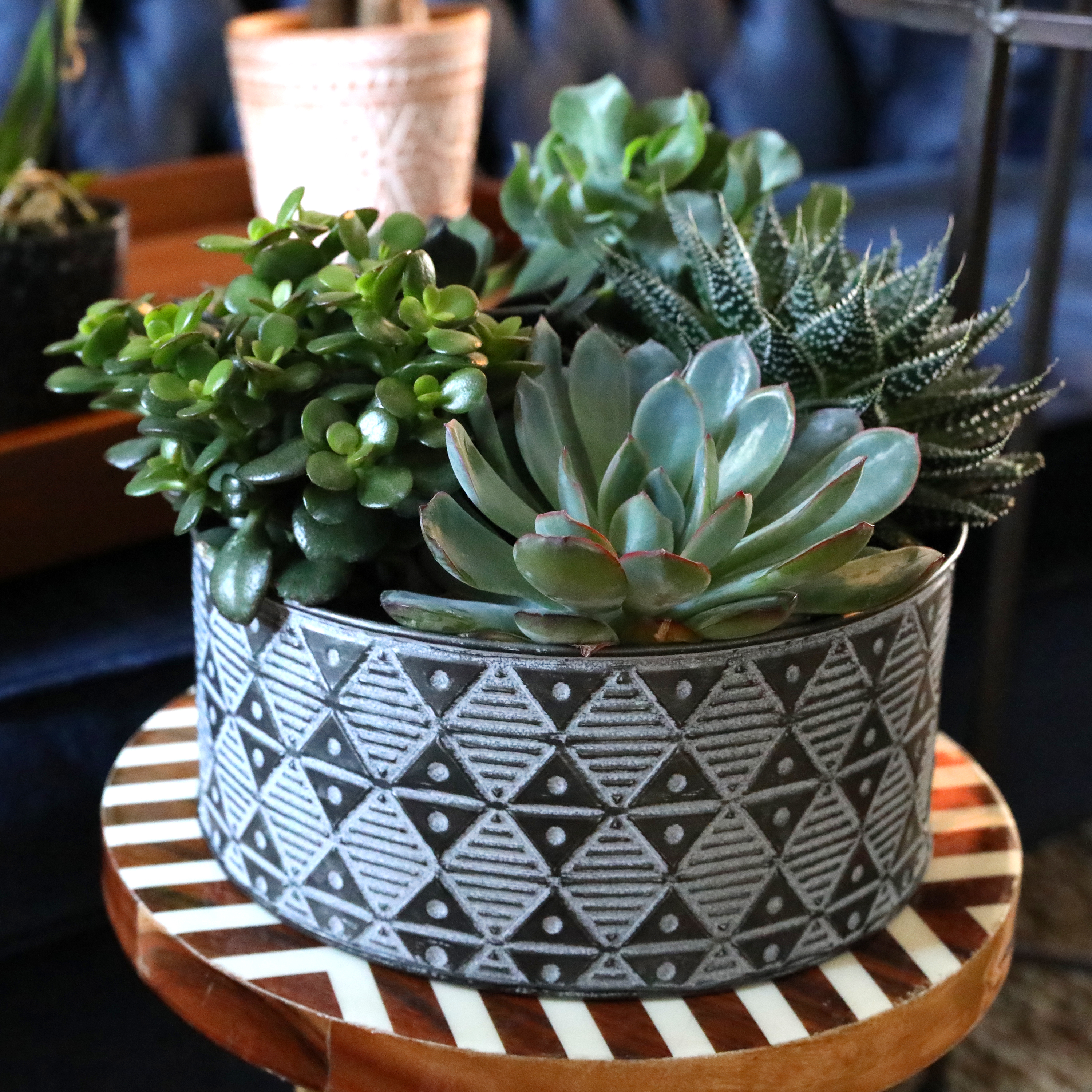Plant Care Everyone Should Know
You just brought a new plant home, whether it’s your first or one of many in your collection, and you’re wondering what you can do to help it grow and flourish.
Some plants are easy and low maintenance, think ‘set it and forget it’ - and others need a bit more love and care.
We’re here to share some of the plant care tips we think everyone should know, whether you’re new to plant parenting or have been around the block.
Rule 1: Water, water, water.
- This rule doesn’t need much explanation. We all know our plants need water to survive. They can tolerate temperature fluctuations and even sunlight changes, but without water – they just won’t make it. However, it’s important to remember that it’s worse to overwater than underwater. Be cautious and check your soil before adding more, especially with succulents and ZZ plants. Most other foliage only needs watering when the top few inches of soil are dry. A great way to avoid overwatering is to ensure there is no water remaining puddled at the base of any of your pots about 30 minutes after watering. If you do find standing water, drain it away.
Rule 2: Check your roots.
- Roots are to plants as a foundation is to a house, essential! If your plant doesn’t have healthy roots, it may be nearing its end. It’s important to keep an eye on them, to ensure they’re healthy, get the right amount of moisture, are able to drain correctly and are in the right soil. Almost all indoor houseplants have roots that will be white or light tan, reasonably firm, and difficult to remove. Black, dark brown, mushy, smelly, or oozy roots are almost always a bad sign. If you notice unhealthy roots, the plant should be unpotted, cleaned, dead roots trimmed, and repotted into fresh soil.
Rule 3: Keep an eye on them.
- Even lower maintenance plants need to be checked on. Even if they’re getting good light and the right amount of water, there could be other things to check on – like old, wilting leaves or bugs. Monitor your plants often to make sure nothing is bothering them. If you have a low maintenance plant that doesn't get any breezes, it can collect dust! Eventually the dust can block some of the light the plant receives, or even clog the plant's pores and prevent healthy breathing! Every few weeks or months a plant should be thoroughly dusted - particularly if it has large leaves like a Fiddle Leaf Fig. A clean leaf is a happy leaf.
Rule 4: Find your light.
- It’s important to choose plants based on the lighting conditions they’ll be living in. If you are buying a plant for your office that doesn’t have any windows, maybe a ZZ plant would be best. If you’re buying a plant for an apartment with a lot of natural light, you may want to get a plant that can handle more direct sun, like a succulent. Rooms with white walls, light colored furniture, and lots of windows tend to really evenly coat a room with light - this is great for plants. When in doubt about your plant, keep it out of the direct sun.
Rule 5: Don’t blame yourself.
- You could do everything ‘right’ and still have a plant that doesn’t succeed. It’s important to not get defeated and try again with another plant! Sometimes there are issues out of your control, and you shouldn’t get upset if one of your plants doesn’t work out.
Rule 6: Be stable.
- We know it can be fun to move plants around and rearrange, but don’t be too quick with it. Plants need stability and consistency, so if you want to relocate a plant, make sure you transition it slowly, so it isn’t shocked by a light or temperature change!
Rule 7: Trim, trim, trim.
- It’s important to keep your plants in order. That may mean they need a trim here and there. If there are dead or dying leaves, remove those. If you aren’t ready to repot, but your plant feels too large, trim back a bit. For many plants, trimming actually triggers hormones that instigate new growth like leaves and small branches. Money trees are a great example of a plant that does its best when regularly trimmed to keep the desired height and shape.
Rule 8: Repotting is good for them.
- Just like we need change in our spaces every so often, so do our plants. It’s important to repot them when they’re ready. While different varieties have different schedules, it’s good to give your plants fresh space once their roots or soil have reached the right stage. They might need a bigger pot to encourage more growth, or just some fresh soil to reset nutrient availability and breathability for the roots. Either way, it’s good to give your plants what they need, since their soil is their home. Most houseplants will need to be repotted once every one to two years to accommodate soil breakdown and root growth. A plant will need repotting sooner if it has grown quickly in the last six months.
Rule 9: Grab your duster!
- Like many household items, plants can collect dust too! Especially foliage with large leaves like calatheas, philodendrons and alocasias. Gently dusting them every so often will help keep them healthy and their leaves will thank you.
Rule 10: A little humidity never hurts.
- Many plants are originally from more humid climates. So, it’s okay to keep them in a more humid space in your home. Some plants may only need a little bit, but others may thrive in a bathroom. Test it out when bringing your plants home and help them figure out where they’ll do best. it may be tempting to mist Orchid or Anthurium blooms to see the little water droplets aesthetically positioned on the flowers, we do not recommend it! Flowers are delicate, too much moisture creates a good environment for fungus and bacteria to thrive in. Botrytis is a fungal problem that puts brown spots all over your beautiful flowers! To avoid this, you should not mist your flowers and ensure there's some healthy airflow in your home.
Any plant care tips you think we missed? Let us know in the comments or reach out to us on social!








